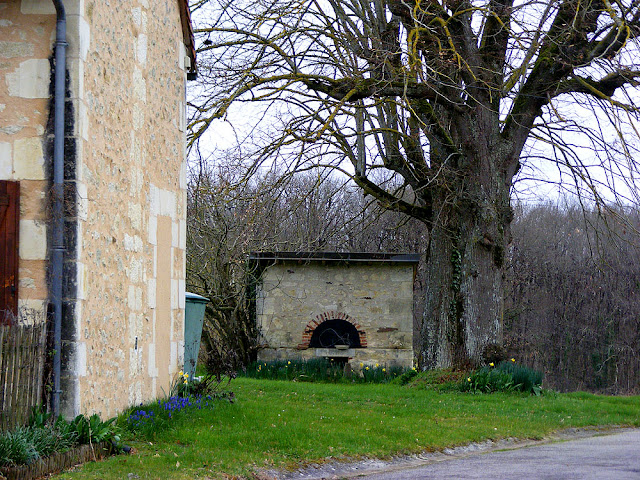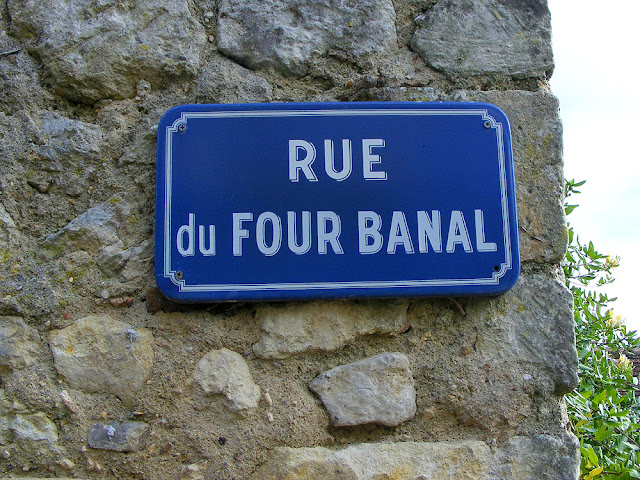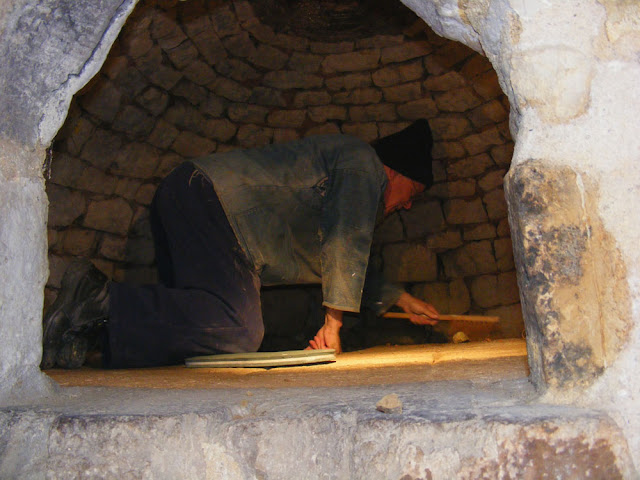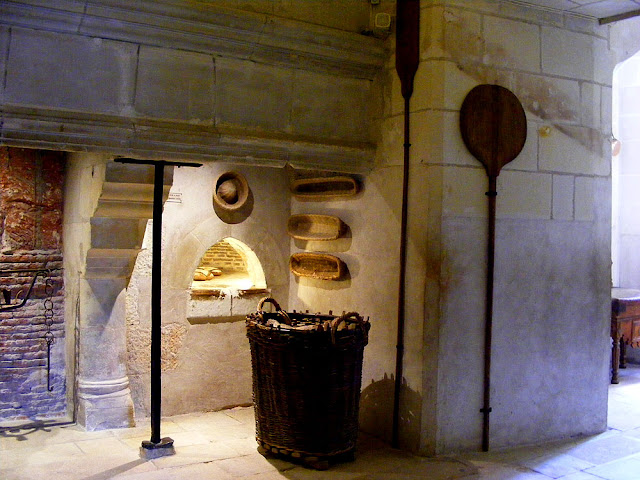Bread has been a staple in France for centuries, and central France is the biggest producer of wheat in Western Europe.

|
| An old bread oven in a farm house garden. |
In the 19th century rural houses often had a separate little building that contained an
oven for the household that would have been used on a daily basis. The oven
was a brick dome surrounded by a fairly standard limestone and terracotta
hut. It was constructed away from the dwelling because of the risk of fire.
Every day a wood fire would be lit inside the dome and once reduced to coals
the embers would be pushed aside and the day’s loaves put in, directly on
the brick base of the oven. Today if you live in a house with one of these
ovens you have likely renovated it and cook pizza in it.

|
| The ruins of a bread oven next to an abandoned salt smuggler's hideaway in the forest. |
If you lived in or near a village in feudal times then you were obliged to
use the four banal, the communal oven, which was owned by the local lord, who charged a fee
for access to the oven. The lord was responsible for the maintenance of
the oven, and he had to make sure that bread was baked perfectly,
otherwise he was fined. But on top of taking one sixteenth of his
peasants’ grain production as a general tax, he took another one sixeenth
as a fee for the use of the four banal. In addition, the lord would have
owned the mill where everyone had to get their wheatground into flour.
Those who lived close to the oven were disturbed by the endless comings
and goings as well as the noise and heat of the oven or ovens. Those who
lived further away were annoyed that they could make the most perfect
dough, but by the time they had brought it to the oven in summer it had
over proved and by the time it arrived to be baked in winter it was too
cold. The baker put in charge of the communal oven had to be available day
and night in case someone turned up to bake their bread.

|
| A nicely restored bread oven in a farm house garden. |
The first four banal appeared in the Middle Ages in Paris near the Tour Saint Jacques, and they quickly spread throughout France, in populous communities becoming huge complexes with enormous and multiple ovens. These fours banaux are similar to the smaller private ones in construction and use. Not just bread could be cooked in these ovens, but gratinée style side dishes of vegetables would commonly be placed in the oven to brown and cook in the cooling bread oven after the loaves had been extracted. If you ever see a dish on a modern menu that is something a la boulangere, it will be one of these homely comforting old meals.

|
| The bread oven in a friend's barn. |
After feudalism ended in France commercial bakeries started springing up
everywhere and the
boulangerie, named after the traditional round
boule
loaf, was born. At first they had big brick ovens and baked all the same
breads that everyone had always baked at home. They would also take
housewives’ gratin dishes and cook them at the end of the baking day, for
a small fee, as at this time many village houses did not have ovens at all
and were cooking on stoves.

|
| A bread oven attached to a friend's barn -- mostly renovated, but still with a fig tree growing out of it. They are undecided as to whether the oven or the fig tree will win. |
At the beginning of the 20th
century a technological change meant that ovens changed. The
baguette
had been introduced, and it required a steam injection oven. Today that is
what most bakers still use, to give their bread that crunchy crust we’ve
all come to expect, and most have switched over to gas or electric rather
than wood fired. But the heavy stone or brick bases of the ovens remain,
as by law in France, certain traditional breads must be stone baked the
old fashioned way, resting directly on the hot base of the oven and not on
a tray or a shelf.

|
| Most towns and villages have a rue du Four Banal. |

|
| The oven in a troglodyte cave, fired up on a village fete day. Some tomato sauce made by the chefs at the Michelin starred restaurant and pizzas are in the oven. |

|
| My friend John sweeping out the large oven in our village's chateau gatehouse. |

|
| A nicely restored oven at a local potter's place (used for pizza not pots). |
We are also on Instagram, so check us out to see a regularly updated selection of our very best photos.





3 comments:
Thank you Susan for this interesting and informative post. I'm craving French bread, halas! There is a rue du Four in Paris, not far from Saint-Sulpice. Certainly a local four banal.
Hi I am Stephen Block and am writing about Tarte Flambe. I was wondering if you knew much about the ovens in Alsace where this dish was created. Would love to hear from you.
Thanks so much for the lovely pictures.
Stephen: I'm so sorry, but I don't know anything in particular about ovens in Alsace. We like flammekueche though, and I occasionally make it. Thanks for your interest, and do send me a link to your article once it's published. I'd be delighted to learn more.
Post a Comment